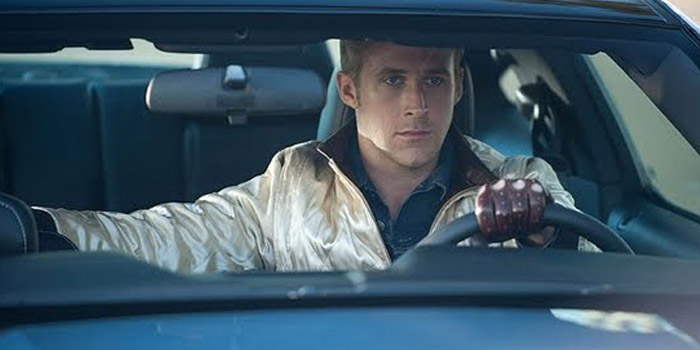Drive
|
So Drive isn’t really a car movie, it’s a gangster flick and has other things to do, which it actually does pretty well. It achieves a classic genre form preaching the classic genre gospel. If his ass is badder, one man can beat the mob, who are really but a ragtag congregation of hubristic amateurs ripe for a fall. Gosling’s Driver (a man with no name, known otherwise only as “the kid”) is a guy who appears soft on the outside but stores enough ultraviolent chutzpah to literally crunch skulls with his new girlfriend watching. His past, the forge of his latent ninja skills and scorpion nature, is presumably so black we may not know it. In seeking to hammer home the Brando/Dean tropes he’s keen for us to get, Refn sometimes pushes Gosling too far on the spectrum from enigmatic towards autistic. In the end Drive’s final debt feels like it might be to Mad Max as it all ends in tears riding a white line to oblivion, or a sequel. |
 There are many movie car chases but hardly any good ones. Most are placeholders where the only thing moving fast is the cutting. Drive nods its head to 1968 so hard it risks whiplash as a fastback 2008 Bullitt Mustang (yes it’s a real Ford model and it’s really called that) is broken out in what else but dark highland green. Director Refn understands how rising engine pitch equates to a vicarous sense of G force, and ended his teaser-excerpt from Drive on that very note. But no, the teaser cuts out where the film cuts to the chase and we’re all back in the box with the standard action cheats. Let’s shoot this at 50 kph and kludge it in post. The first vehicular set piece isn’t about speed, it’s about tactics, but even this, while it might have captivated on paper, is executed as a flipbook of shorthanded vignettes leaving us vague on what happened where and why and how exactly did he elude that helicopter?
There are many movie car chases but hardly any good ones. Most are placeholders where the only thing moving fast is the cutting. Drive nods its head to 1968 so hard it risks whiplash as a fastback 2008 Bullitt Mustang (yes it’s a real Ford model and it’s really called that) is broken out in what else but dark highland green. Director Refn understands how rising engine pitch equates to a vicarous sense of G force, and ended his teaser-excerpt from Drive on that very note. But no, the teaser cuts out where the film cuts to the chase and we’re all back in the box with the standard action cheats. Let’s shoot this at 50 kph and kludge it in post. The first vehicular set piece isn’t about speed, it’s about tactics, but even this, while it might have captivated on paper, is executed as a flipbook of shorthanded vignettes leaving us vague on what happened where and why and how exactly did he elude that helicopter?